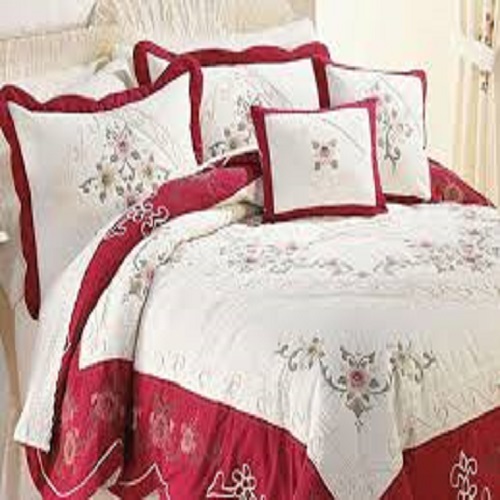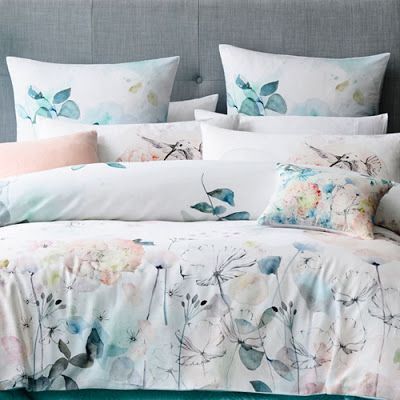
Analysis on home textile market 2020
As one of the three terminal industries , home textile industry is a traditional livelihood industry. It plays an important role in stimulating domestic demand growth, promoting employment and building ecological civilization.In 2019, with the upgrading of consumption in the downstream market and the entry of cross-industry brands, the market competition in China's traditional home textile industry is becoming increasingly fierce, and the performance of leading enterprises in the industry is under pressure. In 2020, the development of the traditional home textile industry will face certain challenges.In recent years, a new generation of young consumers has gradually become the main force of market consumption, and the traditional home textile industry is facing more challenges.According to statistics from the National Bureau of Statistics, from January to November 2019, the domestic sales output value of enterprises above the scale in China's home textile industry reached 119.6 billion yuan, a slight increase of 0.44% over the same period last year.With the transformation and upgrading of consumption, the increasing saturation of consumption in first and second-tier cities and the disappearance of demographic dividend, the growth rate of domestic sales of home textile industry is still under pressure in 2020.China has the maximum share of 39% with USD 18 billion. Poland has emerged as a supplier of home textiles during last years, with a significant growth rate but at small base value. However, China has remained almost stagnant with a growth rate of 0.2%, while countries, such as the United States, Belgium, and Germany, have a negative growth rate.There are numerous issues motivating the global home textile market. Increasing concentration by governments and promising supervisory strategies are likely to be one of the most important motives for the development. Such type of backing has come across with growth in funds within the market. It is additionally boosting the development. Improvement in inclinations of style and thoughtfulness concerning domestic furnishing is furthermore projected to enhance the development.China's textile industry will face a more complex and severe external situation in 2020.The global spread of COVID-19, the increasing risks in the global economy and domestic structural problems remain.The COVID-19 epidemic has not only caused economic losses to textile enterprises in domestic sales, but also exposed them to the loss of foreign trade orders and intensified international competition.

A promising future of home textiles
Bedding mainly including the suite, quilt core, pillow core three categories, according to the value calculation, suite accounted for about 45%, quilt core accounted for about 35%, pillow core and other accounted for about 20%.The total market size is about 100 billion.With the improvement of consumers' consumption level and consumption structure, consumers' demand for home textile products is not only reflected in the home textile products themselves, but also pay more attention to their cultural taste, especially the matching with the overall home decoration style.Therefore, the present home textile industry is not only selling a piece of cloth, more and more is providing the whole house soft decoration solutions, providing supporting design solutions, has been from the single display of fabric to the overall soft decoration trend development, fully reflects the ability of industry integration.The Home Textile manufacturers with an eye for innovation have successfully explored the traditional textiles and shaped them into sophisticated end-products.These products not only suit the trendy market and attract the trendy generation but also have helped in reviving the dying traditional crafts.This artistry has opened a novel pipeline for all the consumers to decorate their home by contemporary designs thereby enriching the interiors.Under the concept of "Home furnishing", the cross-boundary integration of home textile industry is becoming more and more obvious.Home textile enterprises will leave the single role of material supplier, and instead develop together with furniture, home decoration and interior design enterprises, and provide consumers with one-stop and integrated home furnishing solutions and services.However, the integration of home furnishing and home textile is not only reflected in the simple superposition of product categories, but also in the context of different consumer demands set by enterprises to meet multi-level consumer demands.Modern lifestyles and changing needs do demand a practical approach to home furnishings and textiles. The sense of awareness among the consumers is certainly remarkable and the producers ability to translate, innovate and create has created opportunities for profiting from the growing consumer demand.

What is the meaning of Textile Industry?
Introduction to Textiles the Textile Industry Have you ever looked around your home at all of the products that contain some sort of fabric? You might have noticed blankets, furniture, carpet, curtains, and even your clothing. Fabric is a part of our daily lives and we can not live without it. Textile is a fabric that is knitted or woven and made from yarn. Thus, the textile industry is the industry responsible for taking a raw material, like cotton or wool, and spinning it into yarn that is later used to create a fabric.Category of FabricsThe textile industry utilizes many different types of fabrics, but all of them can be broken down into two major categories, natural and synthetic. Natural fabrics are those that occur naturally from things like animals (sheep, silkworms, alpacas) and plants (cotton and flax), such as 3d dolphin bedding, big flower bedding. Synthetic fabrics are those that are created in a lab and are man-made. Some examples of synthetic fabrics include rayon, spandex, polyester, and nylon.History about Textile IndustryUp until the Industrial Revolution, many products in the textile industry were made at home and without the use of machines. But, the creation of machines led to the creation of factories, and soon fabric was mass produced. Some key inventions that led to this boom and development of the textile industry in home textile manufacturers include the flying shuttle, which allowed one weaver to use one hand and operate the loom. The spinning jenny made it possible to spin multiple threads at one time. And then there was the power loom, which used steam to power to combine threads. The cotton gin was a mechanical invention that allowed for a more productive way to separate the cottonseed from the cotton fabric instead of doing it manually. The Jacquard loom which allowed for the creation of designs and patterns on the fabric.Find Best Texttile Here Jize County Caifang Textile Co., Ltd. is a production enterprise about high-end home textiles with self-owned import and export rights, which belongs to Jize County Ziyu Cotton Industry Group. The company is located in Jize County Economic and Technological Development Zone, Handan City. It covers 130 Mu and covers an area of more than 50,000 square meters.It has advanced spinning, weaving and sewing production lines and more than 150 sets of weaving and sewing equipment. The company has a modern standardized management team and a high-quality, highly skilled production team. Our products cover a series of foreign trade bed products such as kit, quilt core, single-piece combination, pillow and cloth.

The future about Textile Industry
The textile industry is an industrial sector that processes natural and chemical fibers into various yarns, threads, threads, tapes, fabrics, and dyeing and finishing products. According to the textil...

Something you should know about quilt
How to choose a quilt1.Material: Choose different quilt covers on the market, each with different comfort levels and different prices. In terms of comprehensive convenience, cotton will fall asleep mo...
